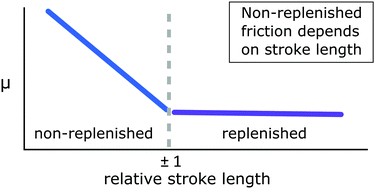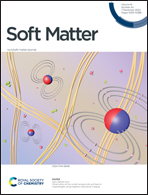A lubrication replenishment theory for hydrogels†
Abstract
Hydrogels are suggested as less invasive alternatives to total joint replacements, but their inferior tribological performance compared to articular cartilage remains a barrier to implementation. Existing lubrication theories do not fully characterise the friction response of all hydrogels, and a better insight into the lubrication mechanisms must be established to enable optimised hydrogel performance. We therefore studied the lubricating conditions in a hydrogel contact using fluorescent imaging under simulated physiological sliding conditions. A reciprocating configuration was used to examine the effects of contact dimension and stroke length on the lubricant replenishment in the contact. The results show that the lubrication behaviour is strongly dependent on the contact configurations; When the system operates in a ‘migrating’ configuration, with the stroke length larger than the contact width, the contact is uniformly lubricated and shows low friction; When the contact is in an ‘overlapping’ configuration with a stroke length smaller than the contact width, the contact is not fully replenished, resulting in high friction. The mechanism of non-replenishment at small relative stroke length was also observed in a cartilage contact, indicating that the theory could be generalised to soft porous materials. The lubrication replenishment theory is important for the development of joint replacement materials, as most physiological joints operate under conditions of overlapping contact, meaning steady-state lubrication does not necessarily occur.



 Please wait while we load your content...
Please wait while we load your content...